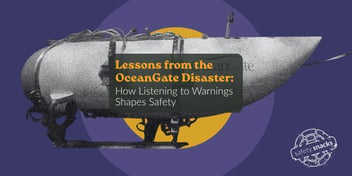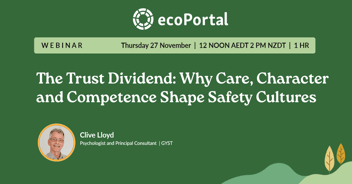As the cold set in this June, I did what many of us do: found a comfy spot, curled up on the couch and flicked through Netflix. A new documentary caught my eye: Titan: The OceanGate Submersible Disaster. I pressed play out of curiosity, not realising just how deeply it would sit with me.
It wasn’t just a story of tragedy. It was a stark reminder of what can happen when safety warnings are downplayed, when voices of concern are ignored, and when curiosity outpaces caution.
In 2023, the incident dominated global headlines. A dive intended to explore the Titanic wreckage ended in catastrophe when the sub imploded, killing all five people on board.
It was a shocking outcome, but not an unforeseeable one. The warning signs were there.
Several engineers and team members voiced concerns about the vessel’s design, its testing protocols, and its overall safety readiness. Some were dismissed after speaking up. Others chose to walk away. These weren’t buried warnings. They were visible and vocal, but ultimately ignored.
In our field, we often talk about “safety culture.” But outside the profession, I’m not sure the term is widely understood. It’s more than policies or posters on the wall. At its core, a strong safety culture is about trust. It’s about creating an environment where anyone, regardless of title or tenure, can raise a concern and know it will be heard, respected, and acted on.
It’s a culture where questions are welcomed, not suppressed. Where speaking up doesn’t come with consequences. Where safety is prioritised ahead of ego, hierarchy, or cost.
In OceanGate’s case, that culture wasn’t there. And the consequences were unimaginable.
This story made me think about the environments we help shape every day in our workplaces. Do the people around us feel safe to speak up? Are we encouraging open conversations about risk, or do we sometimes, without meaning to, close the door with silence or fear?
If we want a safer future, it starts with all of us supporting a culture where raising concerns is welcomed. That begins by asking ourselves right now: what kind of space are we creating?
When someone raises a concern, and it turns out to be nothing, that is still a positive outcome. When someone speaks up and helps prevent an incident, that is a success for everyone.
Silence is never the safer option.
Let’s not wait for disaster to remind us of this. Safety culture isn’t just a box to tick. It’s the everyday actions that show your team their voice matters. It’s the quiet courage of someone raising their hand. And it’s the choice we make to listen.
This short and snappy read is part of our Safety Snacks© series, made for busy safety pros who like their insights one bite at a time.






.png?width=352&name=From%20reactive%20to%20proactive%20(1).png)
.png?width=352&name=Blog%20hero%20image%202406%20(6).png)

